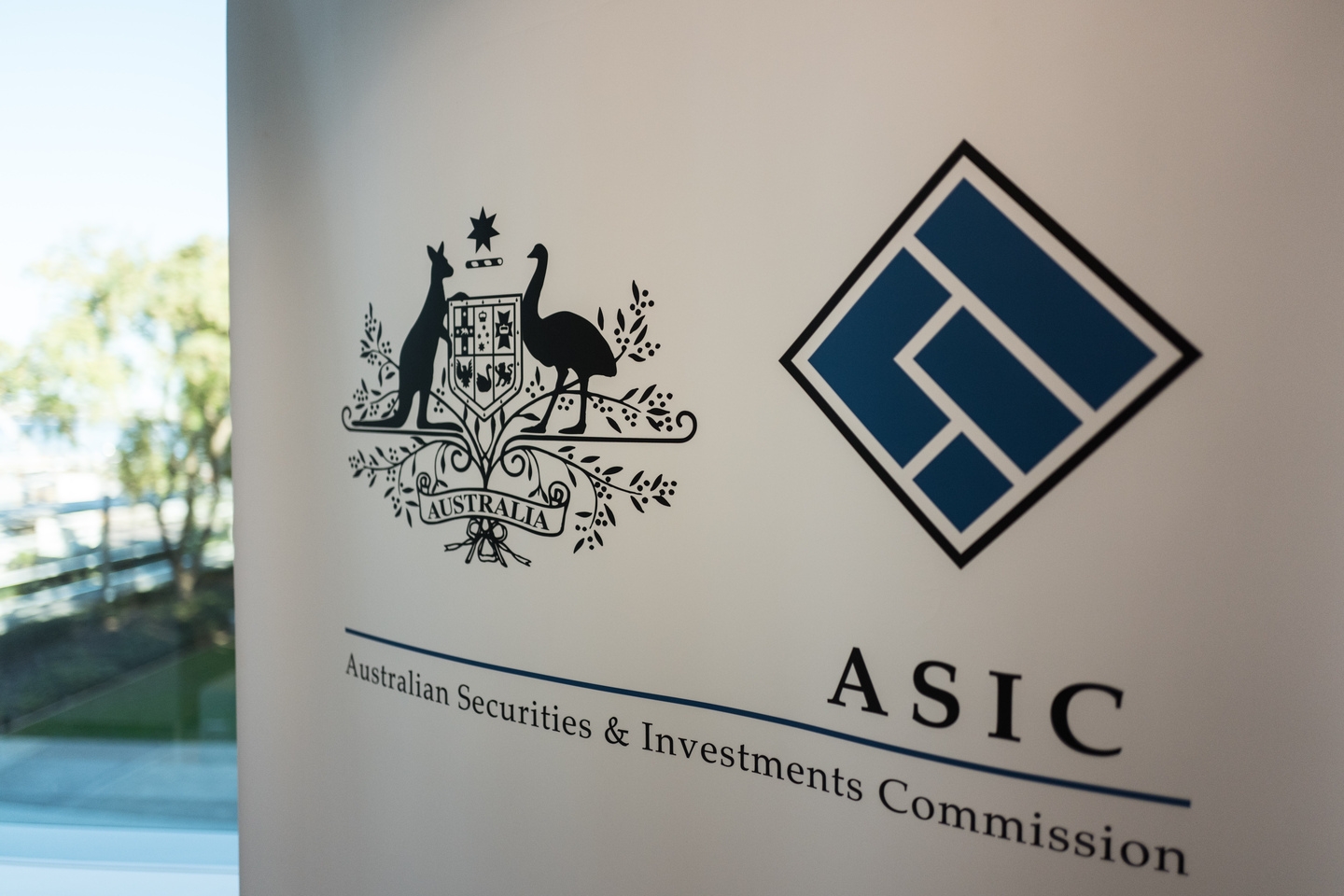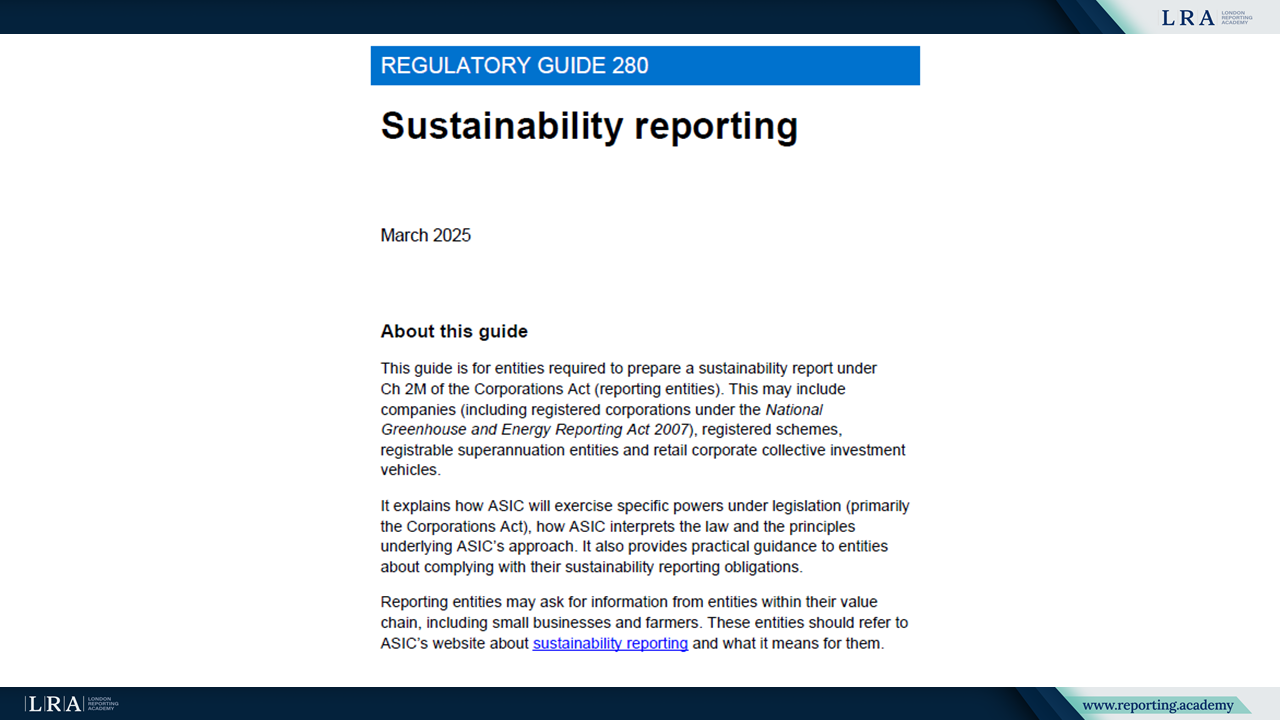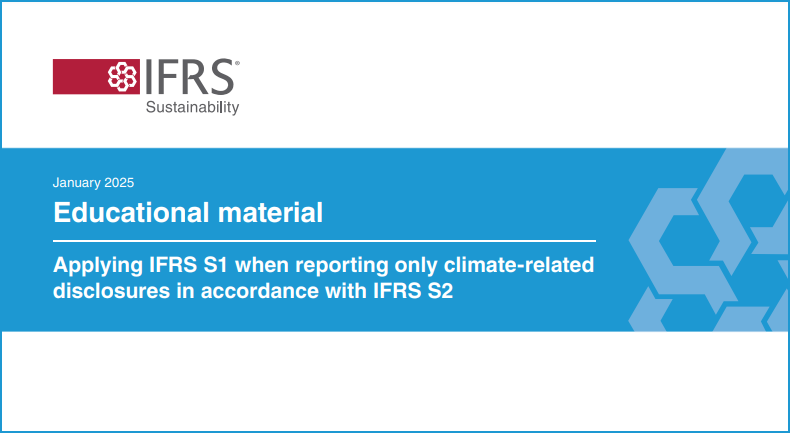ASIC Releases Regulatory Guide to Support Australia’s Mandatory Sustainability Reporting Regime
Australia has taken a decisive step toward mandatory climate disclosure with the release of ASIC’s Regulatory Guide 280. The document outlines how sustainability reporting requirements will apply in practice and sets expectations for preparers ahead of phased implementation beginning in 2025.

The Australian Securities and Investments Commission (ASIC) has published Regulatory Guide 280: Sustainability Reporting (RG 280), providing detailed direction for entities preparing climate-related disclosures under the new sustainability reporting regime. The guide follows an extensive consultation process and supports the implementation of mandatory reporting obligations introduced through the Treasury Laws Amendment (Financial Market Infrastructure and Other Measures) Act 2024.
Context: New Legal and Reporting Requirements
The legislative reform introduces climate-related disclosure requirements into the Corporations Act 2001, making sustainability reporting mandatory for large and medium-sized entities in Australia. Entities required to prepare financial reports under Chapter 2M of the Corporations Act – including public companies, registered schemes, superannuation entities, and retail CCIVs – must now prepare sustainability reports in accordance with the AASB S2: Climate-related Financial Disclosures.
Mandatory reporting will be phased in across three cohorts between 2025 and 2027, starting with entities that meet one or more of the following thresholds: over 500 employees, more than AUD 500 million in consolidated revenue, or more than AUD 1 billion in assets. ASIC is the designated authority responsible for monitoring and enforcing compliance.
Feedback and Key Revisions
RG 280 incorporates industry feedback received during ASIC’s Consultation Paper 380 (CP 380), which generated 60 submissions from stakeholders across business, advisory, and legal sectors. In response, ASIC made several adjustments:
- Expanded guidance on scope 3 emissions and climate scenario analysis;
- Additional commentary on director responsibilities;
- Clarifications on how to apply reporting thresholds;
- Updated position on labelling sustainability-related information;
- Revised approach to disclosures made outside the sustainability report.
Purpose and Scope of RG 280

Source: Regulatory Guide 280: Sustainability Reporting (RG 280)
Regulatory Guide 280 is structured into four main sections, each providing targeted guidance on specific aspects of the sustainability reporting framework:
- Section A: Preparing the Sustainability Report
- Identifies which entities are required to report and when;
- Outlines record-keeping obligations for sustainability-related data;
- Clarifies directors’ responsibilities in overseeing climate disclosures;
- Explains temporary liability settings during the initial implementation phase.
- Section B: Content of the Sustainability Report
- Provides guidance on statements regarding the absence of material climate-related risks or opportunities;
- Addresses forward-looking climate disclosures;
- Covers the use of cross-references and labelling of sustainability-related content;
- Includes notes to climate statements, climate scenario analysis, and Scope 3 GHG emissions;
- Details proportionality mechanisms and exceptions under AASB S2.
- Section C: Interactions with Other Reporting Obligations
- Discusses how the sustainability report aligns with:
- The Operating and Financial Review (OFR) under Section 299A;
- Disclosure documents under Chapter 6D;
- Product Disclosure Statements (PDS) under Part 7.9 of the Corporations Act.
- Discusses how the sustainability report aligns with:
- Section D: ASIC’s Role in Oversight
- Describes ASIC’s supervision and enforcement approach during the initial reporting years;
- Outlines relief mechanisms and the Commission’s approach to reviewing reports;
- Provides guidance on the use of ASIC’s new directions power under Section 296E.
While RG 280 offers valuable guidance for reporting entities, it does not provide exhaustive direction on every aspect of report preparation. Rather, it sets out ASIC’s interpretation of the relevant provisions under the Corporations Act and explains how the Commission will administer and enforce the sustainability reporting requirements in practice.
The guide aligns reporting expectations with AASB S2 and the ISSB climate disclosure standard (IFRS S2), ensuring consistency and comparability with global frameworks. It emphasises the need for clear, high-quality information that supports investor decision-making.
Proportional Enforcement Approach
ASIC has outlined a pragmatic, proportionate enforcement strategy during the transitional period. The Commission will initially focus on education, engagement, and support – including reviewing disclosure practices and working with reporting entities to resolve issues. Where a statement is found to be incorrect or misleading, ASIC may provide entities with an opportunity to rectify the matter or may exercise its new directions power. In cases of serious or reckless misconduct, or failure to prepare a required report, ASIC may initiate enforcement investigations.
Conclusion
The publication of RG 280 marks a significant step forward in Australia’s transition to mandatory climate-related disclosure. By establishing a robust regulatory framework aligned with international standards, ASIC aims to promote transparency, build market confidence, and enable effective climate risk governance across the economy.



